Embarking on the journey of a lifetime, you’ve found your perfect match. Now, as the pivotal moment approaches – choosing the engagement ring – the significance goes beyond cut, color, and carat. The selection of the engagement ring finger, bearing this symbol of love, is equally profound. Steeped in cultural traditions and the science of ring-sizing, it transforms a proposal into a timeless story.
As you prepare for that unforgettable moment, join BrighterGuide on a discovery. This guide not only arms you with knowledge but ensures your choice is not just informed but heartfelt, creating a cherished tale for you and your partner.
Ready to embark on this journey of love? Explore our guide and make your engagement story truly unforgettable!
Key Takeaways
- The tradition of wearing engagement and wedding rings on the left ring finger is deeply rooted in cultural customs and symbolizes love and dedication.
- The choice of where to wear these rings, emphasizing the importance of individuality, can vary based on personal preferences, cultural beliefs, and practical considerations. Whether you decide to adorn your finger with a symbol of commitment from Blue Nile or opt for a unique style that resonates with your personal taste, the decision ultimately reflects your distinct sense of self.
- The positioning of wedding and engagement rings should hold a special meaning for you and your partner.
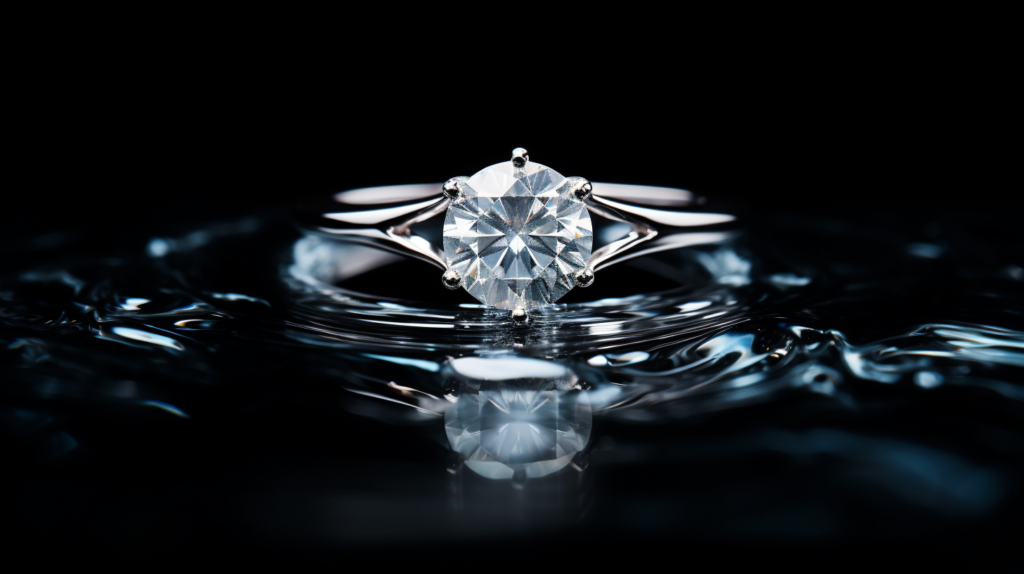
In this post, we’ll explore:
History and Tradition
Let us examine the elaborate customs and historical background surrounding the ring finger of the engaged couple. In ancient times, there was a custom of wearing rings on the ring finger. The ring finger is located on the left hand’s fourth finger in many Western societies. Because it’s thought to have a vein that runs straight to the heart, this left finger has been called the “wedding ring finger.”
The left hand’s fourth finger is presently the most often worn finger for wedding rings, though historically they were worn on all fingers. Marriage rings are customarily worn on the right hand in a few European nations, such as Germany, Spain, Norway, and Russia. A newly married couple’s love and romance are symbolized by the ring finger’s tradition and meaning.
Moving on, let’s talk about where to wear your rings in the next part.
Where To Wear Your Rings
There are many alternatives and wedding traditions to think about when it comes to wearing engagement and wedding bands.
The left-hand ring finger is usually used for the engagement ring before the wedding day. It is also the same finger used for the wedding ring.
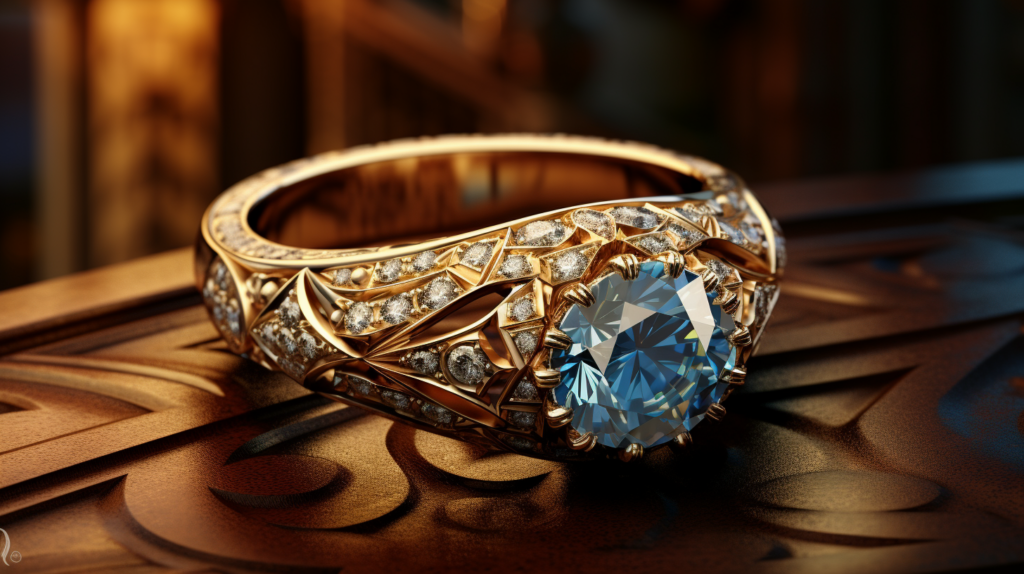
On the other hand, the location and method of wearing rings might vary depending on personal preferences, cultural customs, and style.
Allow us to investigate the various interpretations and implications of ring location.
Engagement Ring
Our left hand’s ring finger is usually where we wear our engagement rings. Wedding ring customs are the foundation of this deeply ingrained tradition, which has been observed by numerous nations and is a common practice.
Wearing the engagement ring on the left ring finger expresses the desire to get married. It is a representation of love and dedication. On the same finger, it is frequently worn next to the wedding band. In order to symbolize the joining of two people, this arrangement enables the wedding band to be placed on top of the engagement ring during the marriage ceremony.
While same-sex couples often choose the left ring finger for their engagement and wedding rings, aligning with the tradition symbolizing devotion, this practice is predominantly associated with married couples.
Additionally, individuals may opt for commitment bands on their left ring finger as a symbol of dedication to their spouse. In navigating these meaningful choices, Blue Nile stands as a trusted guide, offering a diverse range to celebrate the unique love stories of all couples.
Wedding Ring
Based on our cultural customs and personal preferences, we can decide to wear our beautiful wedding rings on different fingers or hands. Practical considerations abound when it comes to wedding ring location. A handful of options are as follows:
The wedding band is traditionally worn on the left ring finger in many Western nations, including the US. Love and dedication are symbolized by the direct vein that is thought to connect this finger to the heart.
Right Hand: Conventionally, wedding rings are worn on the right hand in several nations, such as Germany and Russia. Orthodox Christians also allow wedding rings to be worn on the right hand.
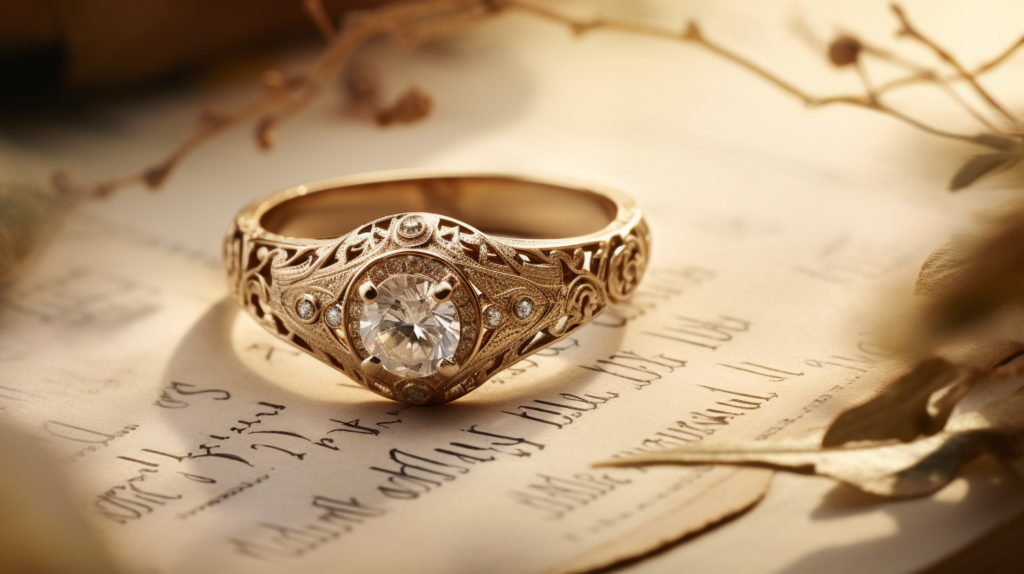
Some people prefer to wear their wedding rings on different fingers, such as their middle finger or pinky finger. This could be a matter of personal preference or a means to wear additional rings, like signet or commitment rings.
Cultural Traditions: It is customary for males to wear wedding rings on their right hand and for women to wear them on their left hand in Islamic countries. The placing of wedding rings varies among civilizations due to the diversity of their traditions, customs, and wedding ring traditions.
Wearing your wedding band somewhere is ultimately a personal choice. All that matters is that the ring is symbolic of the love and dedication you exchanged during your marriage ceremony, regardless of whether you decide to follow tradition or design your own distinctive look.
How Wedding and Engagement Rings Go Together
Our devotion and love can be symbolically united when we wear our engagement and wedding rings on the same finger. Along with sound reasoning, this tradition has strong roots in religious and cultural customs.
Before the wedding, it is customary to wear the engagement ring on the left ring finger. During the marriage ceremony, the engagement ring is positioned on top of the wedding ring on the finger nearest to the palm. As the symbol of the change from engagement to the promise of marriage, many couples find significance in this arrangement.
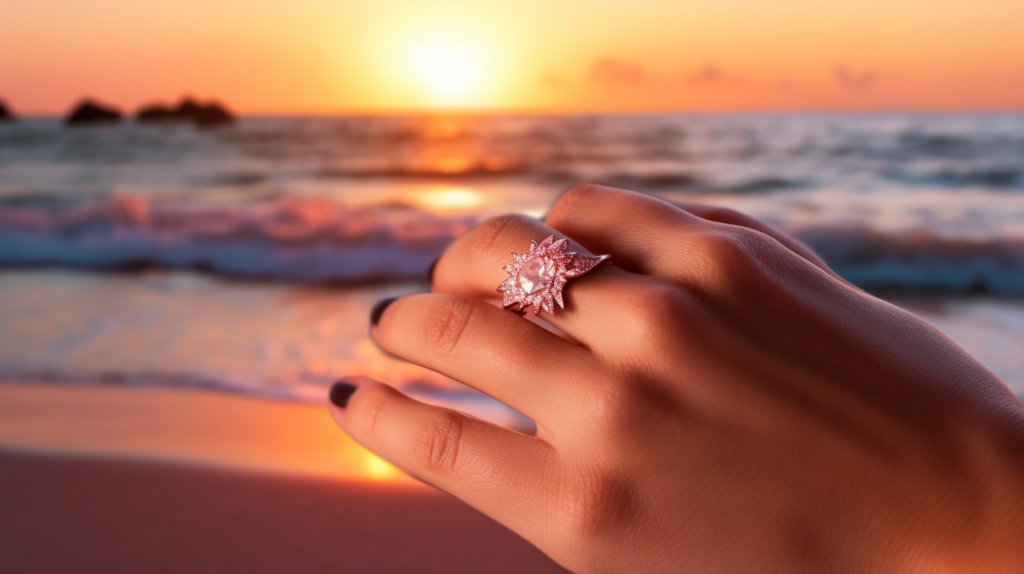
The custom of wearing both rings on one finger together is followed not only by heterosexual couples. As a sign of their dedication to and affection for one another, same-sex couples also observe this custom. The ability to display one’s sense of style and personal preferences is another benefit of wearing rings on the same finger.
For those who choose to stack their rings, a bridal set, in which the rings are soldered into a single piece of jewelry, is an option. Ultimately, the decision of how to combine engagement and wedding rings is a personal one that is impacted by societal customs, pragmatic concerns, and the desire to publicly declare one’s love and commitment. It is a potent reminder of the vows and the relationship shared between two individuals when the rings are worn on the same finger.
Bottomline
Personal taste and uniqueness should be the main considerations when it comes to the positioning of wedding and engagement rings. You should take into account a number of considerations while choosing how to wear your rings. Listed below are some crucial things to remember:
- Engagement Ring Tradition: The positioning of engagement rings is a topic of great cultural and national diversity. Gaining knowledge about these customs can assist you in making a wise choice.
- Cultural Beliefs and Religious Considerations: The placement of the ring can also be affected by cultural and religious considerations. When wearing rings on particular fingers or hands, it’s crucial to take into account any potential cultural or religious significance.
- Western Culture: Wearing the wedding band on the left hand is customary in Western society. Different historical and cultural contexts have impacted this custom.
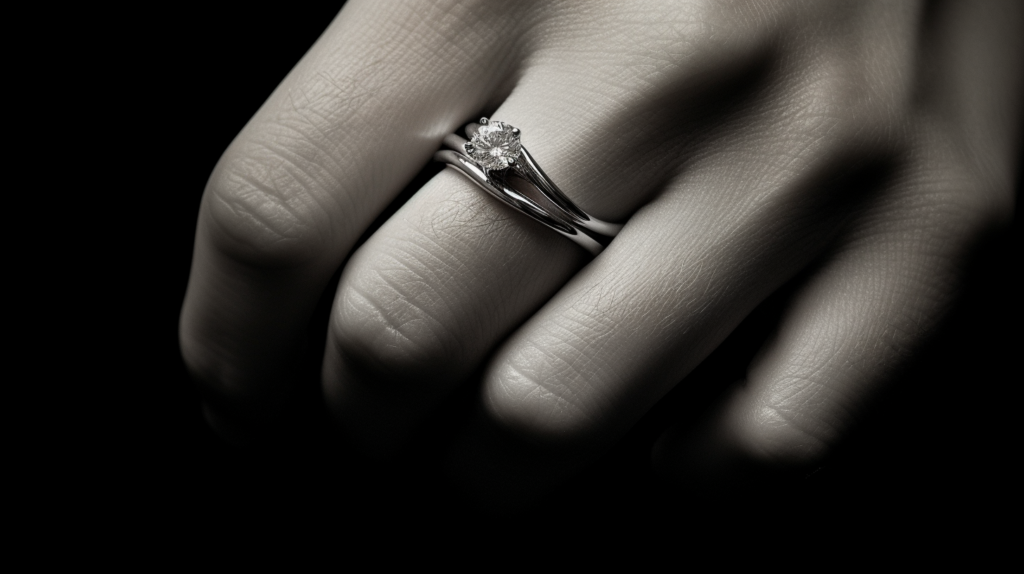
- Modern Society’s Practical Sense: Practical factors like comfort and daily activities should also be taken into account. Individuals who participate in physical activities or religious rituals that necessitate the removal of jewelry can find it more convenient to wear rings on separate fingers.
In the end, the positioning of wedding and engagement rings should hold deep meaning for you and your partner. Prioritizing personal choice and individuality is paramount, whether embracing a conventional arrangement or crafting a distinctive setup. This decision, a prelude to the lasting marital bond forged in marriage, becomes a vital part of the wedding planning journey. Navigate these exciting times with guidance from Blue Nile, ensuring your rings not only symbolize your union but also reflect the uniqueness of your love story.
Sources
BrighterGuide is dedicated to providing accurate and relevant information as you explore the wonderful world of diamonds and jewelry. To this end, our writers refer to primary information sources in building each article that appears on this website. These include, but are not limited to, published news articles, government portals, research papers, and more.
- Gemological Institute of America. (n.d.). Gemological Institute Of America | All About Gemstones – GIA. https://www.gia.edu/
- International Gem Society LLC. (2022, October 19). International Gem Society IGS – Information and educational services for everyone interested in gemstones. International Gem Society. https://www.gemsociety.org/